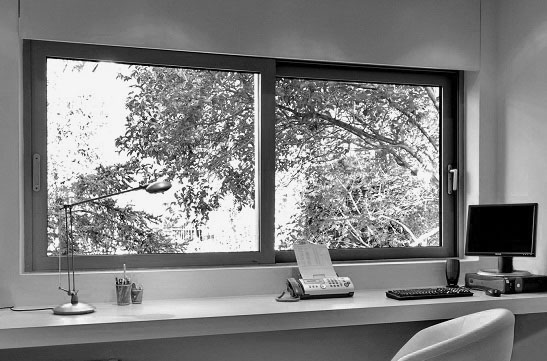 |
|
Advantages of sliding windows
Sliding windows are ideal for when you want to enjoy views of the outside as much as possible. They are recommended for large windows, as they allow very good use of sunlight.
Sliding windows have another great virtue: they occupy only the plane in which they move, so the convenience of opening them does not affect interior decoration. Curtains or furniture can be placed nearby and no space is lost. They can open to the left or to the right.
Disadvantages of sliding windows
However, they have the disadvantage that only part of the opening – generally half – is usable and that they fit less hermetically, so they are generally less water- and air-tight and their sound and thermal insulation properties are generally poorer than in casement windows.
They are also more difficult to clean, as it is necessary to dismantle at least one leaf periodically in order to carry out this task.
It is advisable to install good wheels to make the leaves slide more softly and gently
This window is available in PVC and aluminium. In the latter material it is also available with thermal breakAluminium is an excellent conductor of cold and heat and is not an effective thermal insulator.
Thermal Break (TB) consists of preventing contact between the outer and inner faces of the window by fitting a rubber separator between the external and internal profiles to eliminate conduction and increase insulation.
Another advantage of TB is that it improves the sound insulation of the window.. A two-colour finish is possible.
It is possible to considerably increase security by fitting a multi-point locking system.
It is recommended to use double glazingDouble glazing – also called insulated glazing or even Climalit – is glazing consisting of at least two panes of glass (interior and exterior) separated by a chamber of dehydrated air guaranteed with a double seal.
Double glazing is an excellent thermal and sound insulator compared to single glazing. Single glazing consists of a single pane of glass and is recommended for internal architecture (internal glass doors, dividing elements, mirrors, environment separators, decorative glass) and external architecture (integrated into rails for balconies or terraces). to improve the sound insulation.







